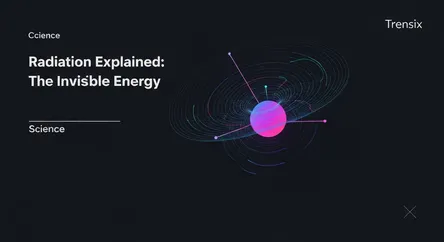Science
Radiation Explained: The Invisible Energy

Explore radiation, the emission of energy through space. Learn about its types, its role in the universe, and its impact on technology and health.
What is it?
Radiation is the emission or transmission of energy in the form of waves or particles through space or a material medium. It encompasses a wide range, known as the electromagnetic spectrum, from low-energy radio waves and microwaves to high-energy X-rays and gamma rays. It's often categorized into two main types: non-ionizing and ionizing. Non-ionizing radiation, like visible light and radio waves, has enough energy to move atoms in a molecule around but not enough to remove electrons. Ionizing radiation, however, carries enough energy to strip electrons from atoms, creating ions. This type includes alpha particles, beta particles, and gamma rays, which are released by radioactive materials and cosmic events.
Why is it trending?
Discussions about radiation are trending due to several modern contexts. The global push for clean energy has renewed interest in nuclear power, which relies on controlled nuclear reactions that produce radiation. In medicine, advanced radiation therapies for cancer treatment and sophisticated imaging techniques like CT scans are becoming more common. Furthermore, public interest and concern persist around radiation from consumer electronics, 5G networks, and background radiation from cosmic sources, fueling ongoing scientific research and public debate.
How does it affect people?
Radiation has a dual impact on human life. It is an indispensable tool in modern medicine for both diagnosing and treating diseases, most notably cancer. It's also the foundation of nuclear energy, providing a powerful carbon-free energy source. However, exposure to high levels of ionizing radiation can be harmful, causing damage to living tissue and DNA, which can increase the risk of cancer and other health issues. Because of this, strict safety protocols and regulations are in place for industries and medical fields that use radiation to protect both workers and the general public from unnecessary exposure.